Is Vulnerability the New Hero Leadership?
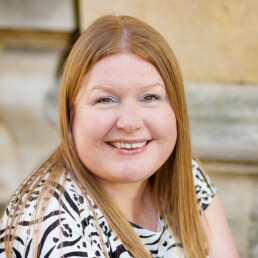
Hannah Wilson
Blog originally published here.
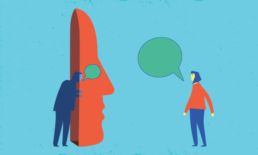
Invited to contribute to one of The Big Education’s ‘Big Conversations’ I was excited to join a stellar line up including Sir Tim Brighouse, Karen Giles and Nadine Bernard. Each speaker contributed a perspective on leadership which we all agreed should be underpinned by values, integrity and authenticity. However, we realised that in order to talk with conviction about vulnerability it felt appropriate to reveal some of our own vulnerabilities, both professionally and personally, so that the audience may learn from our reflections on our career experiences and indeed mistakes we had made along the way.
So, my musings began: Is vulnerability a new thing? Indeed, it is not. Is it a new thing when we are looking at leadership? Perhaps it is. How does it relate to hero leadership? Well, this is where it gets interesting in my eyes – if we review the dominant narrative and imagery of leadership, it is depicted as acts of heroism, as an effective leader being a strong leader, and often through a gender stereotyped lens too.
When you start searching for vulnerability definitions and quotations some common ideas begin to take shape which encompass elements of uncertainty, risk and emotional exposure. An expert in the field of vulnerability is Positive Psychologist Brene Brown who has written a number of books and delivered a TED talk on why we need to embrace it.
“Vulnerability is at the core, the centre, of meaningful human experiences”. (Brown)
Thus as schools are people-centred, and the ultimate success of a school is based on the quality of the relationships nurtured between the people the school serves and those who are serving them, then the messiness of the human existence and the rawness of human vulnerability is at the core of education.
As school leaders we work with increasingly vulnerable communities. We are under daily pressure to meet the needs of the children in our care, their families and the wider community. As a headteacher I was acutely aware of the emotional labour my team were weighed down with as we safeguarded our school community. As a school we decided to put mental health and wellbeing at the centre of our curriculum and our decision making as a school, which elevated the initiatives we committed to such as our art therapy, thrive and nurture programmes.
Alongside the needs of our students, we also needed to meet the needs of our vulnerable staff. As a school who was prepared to do things differently to strive for a different outcome, our hope and optimism attracted staff who were looking for solutions, staff who wanted to stay in the system but who were feeling forced out. A school is often a safe haven, a place of security and stability, a place of belonging and visibility, a place of diversity and inclusion. In her work on silence and speaking out, Audrey Lourde suggests “that visibility which makes us most vulnerable is that which also is the source of our greatest strength”. (Lourde, 2017)
“Vulnerability sounds like truth and feels like courage. Truth and courage aren’t always comfortable, but they are never weakness”. (Brown, Daring Greatly , 2015)
It has become more and more apparent that some schools are more vulnerable than others to work in. Schools serving the disadvantaged communities, coastal schools and schools with poor inspection outcomes often become SNOW schools (schools no one wants) which are then often academized and (re) brokered into trusts to fix.
In our current school system we equally find that school teachers and school leaders are finding themselves in increasingly vulnerable roles. The ‘glass ceiling’ for women leaders in the school system has been a high-profile topic of debate for the last five years since we started #WomenEd a grassroots gender equality movement. With the arrival of our sibling #BAMEed, our reflections and discussions moved from the ‘glass’ ceilings to ‘concrete’ ceilings as we scrutinised the data of the demographic breakdown of our teachers and leaders versus our students. In an increasingly diverse country, with nearly one quarter of children in our primary schools representing a range of different cultures we have a disconnect when the number of BAME teachers is significantly lower than this and the number of BAME school leaders represent a marginal percentage. With national initiatives to increase the number of women and BAME headteachers, we need to ensure that they are recruited to roles which are well-supported and do not end up in roles which are ‘glass cliffs’, those roles which are isolated, unstable and unsupported. Vulnerable demographic groups ending up in vulnerable roles in vulnerable schools is problematic for our workforce data as the narrative then becomes warped about who the ‘heroes’ in the system are.
“Vulnerability is not winning or losing; it’s having the courage to show up and be seen when we have no control over the outcome. Vulnerability is not weakness; it’s our greatest measure of courage”. (Brown, Rising Strong, 2015)
We also find ourselves in an era where we are struggling to recruit and retain teachers, but equally where we have a high attrition rate and mobility of headteachers. There is an emerging narrative of headteachers speaking out about the vulnerability of their role. James Pope, the former Headteacher who featured on the ‘School’ television documentary has started a campaign and series of events to support school leaders who are casualties of the system. With the corporatisation of our education system, the HR processes and systems in schools are becoming increasingly business like. The language of ‘NDA’s, ‘Gagging Orders’, ‘Pay Offs’ and ‘Gardening Leave’ is now commonplace.
As I prepared my speech, listened to the other speakers, reflected on the topic and discussed it with others in the room my final thoughts are: is there a difference to being vulnerable and feeling vulnerable as a school leader? Do we thereby need to learn from and embrace these facets in different ways?
“Daring greatly means the courage to be vulnerable. It means to show up and be seen. To ask for what you need. To talk about how you’re feeling. To have the hard conversations”. (Brown, Daring Greatly , 2015)
To embrace our vulnerability we are encouraged to: find the courage to be seen; ask for what we need; accept the imperfect; show compassion to self and others; talk about how we are feeling; be authentic; be prepared to take risks; own our stories. A great piece of advice I once received stated that: maybe life isn’t about avoiding the bruises, maybe it’s about collecting the scars to prove we showed up for it. This resonated with me and my philosophy of character education, growth mindset and learning from mistakes, as a fear of failure can inhibit our potential. In order for us to be ‘innovative, creative and agents of change’ we need to lean into our vulnerability. (Brown, Daring Greatly , 2015)
Hannah Wilson
Former Executive Headteacher, Co-Founder of #WomenEd and Head of Secondary Teacher Training
References
Brown, B. (2015). Daring Greatly . New York: Penguin.
Brown, B. (2015). Rising Strong . New York: Penguin.
Brown, B. (n.d.). The Power of Vulnerability. TED Talk.
Lourde, A. (2017). Your Silence Will Not Protect You. Silver Press.
Fragility

Hannah Wilson
Blog originally published here.
Fragility: noun. the quality of being easily broken or damaged; the quality of being easily harmed or destroyed.
See my twitter thread on Fragility which led to this blog.
Life is fragile. The world is fragile. Humanity is fragile.
When I think of fragile things I think of bubbles, snowflakes, panes of glass, flowers, butterflies, glass baubles and dandelion clocks.
Fragile, delicate things. Things that break easily. Things that shatter.
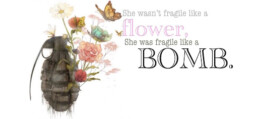
The universe has spoken in the last few months and reminded us of the fragility of our lives, our world and our humanity.
We have been reminded that we are not in control. We have been reminded that life is short. We have been reminded that we will all die one day.
I have always been afraid of death. I had nightmares as a child about it. I would wake myself up crying, scared of people around me dying.
As a 41 year old I have surprisingly never been to a funeral. I have attended just one memorial for a friend who died of cancer when we had just finished university. Her body succumbed to the illness on her third wave as it crept into her spinal cord.
Synonyms for fragile include brittle, breakable, flimsy, weak, frail, delicate and eggshell. For fragility we can interchange frailty, weakness, delicacy and vulnerability.
I sometimes wish we could wrap our loved ones up in cotton wool, put them in a bubble to protect them from harm.
Thinking about the calcified shell of an egg, I wonder about the scientific wonder of a brittle layer, holding life within. Protecting the inner contents from force, desiccation and danger.
Fragile things need to be guarded, they need to be treated with care. One careless touch can irrevocably damage that state of a delicate object.
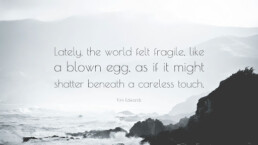
But then we come to white fragility. A term that has become part of the common parlance in the #BlackLivesMatter narrative.
Unlike, the delicate, beautiful, fragile objects we need to preserve and protect, white fragility, to the converse does need shattering.
White Fragility: noun. discomfort and defensiveness on the part of a white person when confronted by information about racial inequality and injustice.
In 2011, Robin DiAngelo coined the term “white fragility” to describe the disbelieving defensiveness that white people exhibit when their ideas about race and racism are challenged—and particularly when they feel implicated in white supremacy.
I repeat: Life is fragile. The world is fragile. Humanity is fragile.
Yet, we have an issue. We seem to be more uncomfortable in being party to a conversation about racism, than we are about the act of racism itself.
All human lives are fragile, there is not a hierarchy of some lives being of more value than others. We live in the same world, but some parts are more fragile than others. Some inhabitants exist in more delicate and more fragile situations than others. Humanity is fragile, but there is a scale of fragility. We will all die, but we do not all fear death and danger, day in and day out.
We, as white people, need to educate ourselves on our whiteness. Words I am reading, seeing and hearing regularly that need unpacking:
White privilege: white skin privilege refers to societal privilege that benefits white people over non-white people in some societies, particularly if they are otherwise under the same social, political, or economic circumstances.
White supremacy: is the racist belief that white people are superior to people of other races and therefore should be dominant over them.
White power: a white supremacist slogan designed to mimic the “black power” slogan often used by African-Americans in the 1960s/70s. It is a commonly shouted at white supremacist events as a racist rallying cry.
White silence: white silence is experienced by members of the White culture who, during discussions of racial issues, experience negative emotions including guilt and anger. When these feelings are not addressed, Whites begin to resist certain content areas. This resistance takes on the form of White silence.
White allies: a white ally acknowledges the limits of her/his/their knowledge about other people’s experiences but doesn’t use that as a reason not to think and/or act. A white ally does not remain silent but confronts racism as it comes up daily, but also seeks to deconstruct it institutionally and live in a way that challenges systemic oppression, at the risk of experiencing some of that oppression. Being a white ally entails building relationships with both people of color, and also with white people in order to challenge them in their thinking about race. White allies don’t have it all figured out, but are committed to non-complacency.
White tears: The phrase has been used to gently tease white people who get upset at things they think threaten their white privilege. It’s been used to poke fun at white people who think that talking about race makes you a racist.
Whitesplain: ‘splain’ has since become an affix signifying a patronizing, condescending explanation, usually given by a person in a privileged position. Whitesplain, then, is when a white person explains a topic, often concerning matters of social justice or minority culture, in an overconfident, often inaccurate manner to people of color. (A new one I heard for the first time this week is: “PrivSplain“)
White panels: white people need to get better at seeing race, addressing it, and addressing our own complicity. Taking part in all-white panels – especially on a subject where race is central – simply isn’t good enough.
Other phrases that are showing up repeatedly that we also need to consider the significance and connotations of are: White pillars. White solidarity. White equilibrium. White racism. White progressives. White hostility. Colour Blindness.
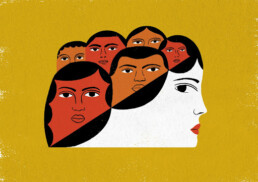
Why is it so hard for white people to talk about racism?
This is the question posed by academic Robin D’Angelo in her book “White Fragility”. Her research exposes racism in thought and action – it is a call for humility and vigilance.
“The problem with white people,” she says, “is that they just don’t listen. In my experience, day in and day out, most white people are absolutely not receptive to finding out their impact on other people. There is a refusal to know or see, or to listen or hear, or to validate.”
Robin D’Angelo
I have seen a lot of white people get very uncomfortable about what to do and what to say in the current context. Conversations about racism will cause discomfort and defensiveness. Our focus and attention should be on the discomfort of others, our defence should be of lives not egos.
We, as white people, need to get comfortable with being uncomfortable, that is how we listen, we learn and we progress.
We, as white people, need to stop being part of the problem, and we instead, need to start being part of the solution.
We, as white people, need to put our disbelief and sensitivity to one side and we need to be aware that we are complicit in society’s institutional racism.
Being silent is not enough. We need to be anti-racists rather than non-racists. We need to be active not passive in our commitment to ensuring that everyone is seen, everyone is heard, everyone is valued.
We have had a wake-up call, and we need to put our fragility to one side, and respond.
We need to check our privilege and we need to commit to being better, to doing better. One thing I am going to commit to continuing to do is calling out all-white line ups.
As women we have critiqued all male line ups at events, but as women now penetrate more panels and their voices are heard in more spaces, we need to make sure that white women are opening the door for brown and black women to step in and share that space. I am seeing too many influential white women in education accepting to speak at events where there is not diverse representation. This is not good enough.
We need to pop the bubble we exist in.
Brene Brown has started a campaign this week called #ShareTheMicNow to model how to do that. Please check it out.
